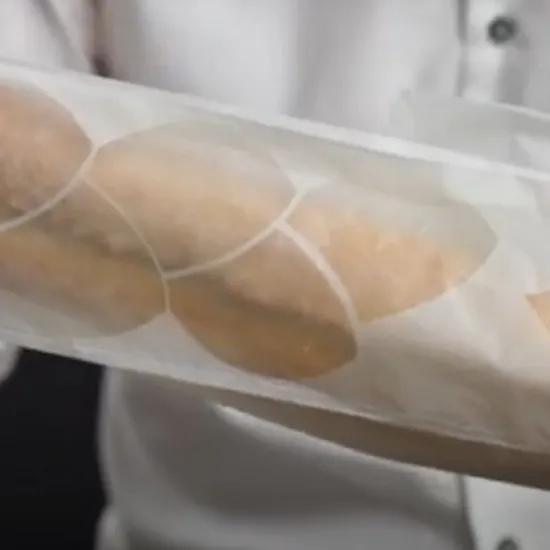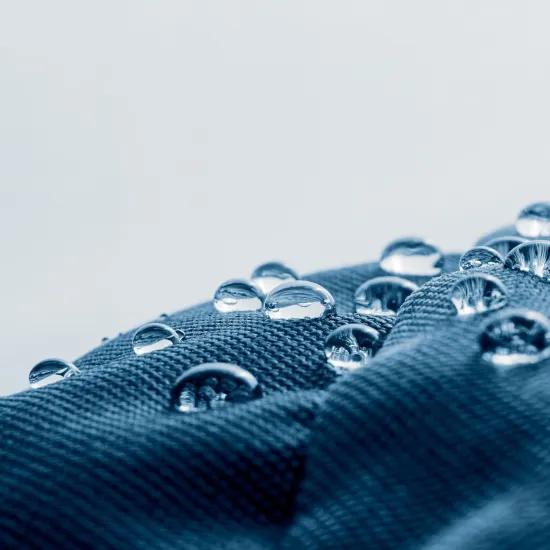By combining a light polymer with strong and rigid fibres, composites bring all these properties together in one material. Composites also offer other advantages, such as freedom of shape, corrosion and fatigue resistance. They are therefore widely applicable in industries such as aerospace, automotive, sports and construction. In this article, the first in a series, you will read about five challenges and opportunities in the design phase of a biocomposite product.
To reduce the environmental impact of conventional, fossil-based, composites, Sirris has been exploring the possibilities of bio-sourced composites for several years. These bio-sourced composites consist of plant or mineral fibres, where the polymer can also be bio-sourced. Through both one-to-one interaction and collective research and development, Sirris is lowering the threshold for getting started with biomaterials in the industry.
This article summarises five challenges and five opportunities to keep in mind while working with biocomposites.
Biomaterials and their properties
Opportunity 1: Stiffness and density
In terms of reinforcing fibre material, several natural fibres that have similar mechanical properties to glass fibres. Plant fibres such as flax and hemp display a stiffness similar to glass fibre (70 GPa), with a density slightly more than half (1.45 g/cm3 vs. 2.55 g/cm3). The strength of plant fibres is typically two to three times lower than glass fibre. The mineral fibre basalt exhibits higher stiffness as well as strength than glass fibre.
Challenge 1: Resistance to environmental influences
Plant fibres are intrinsically fire- and water-sensitive. In contrast, the high fire resistance of basalt fibre is a major advantage in its use. For biopolymers, in turn, UV, scratch, fire, temperature and moisture resistance are highly dependent on the material and additives used. Fibre treatments, application of a (bio)coating and the right polymer choice can increase the environmental resistance of biocomposites where necessary. Boats, kayaks and canoes that have been made from plant fibre, for example, show that water resistance does not have to be a problem.
Opportunity 2: Mechanical and acoustic damping
In terms of damping, plant fibre composites outperform both glass and carbon fibre composites. The damping in plant fibre composites can be up to ten times higher than that in conventional composites. This makes the use of biocomposites an opportunity for applications requiring high acoustic and mechanical damping from the material.
Challenge 2: Consistent quality of plant fibre
An important consideration when working with plant fibres is the possible spread in mechanical properties. For example, the quality of plant fibres can be site- and seasonal-specific. Regular material characterisation by the material supplier is necessary to supply correct properties to material customers.
Opportunity 3: Available biopolymers
Both thermoplastic and thermosetting polymers have alternatives of partly or fully biological origin. Some typical examples include PLA, PHA, biopolyester and bio-epoxy. Thermoplastic biopolymers are typically fully bio-sourced. Commercially available thermosets have a bio content of 20 to 100 per cent. This consideration is typically made to maintain affordability and required quality.
Challenges during processing
Challenge 3: Degradation temperature of plant fibres
Although the polymer used usually determines the process parameters, when using plant fibres, a maximum processing temperature of the fibres also applies. For example, cellulose molecules in plant fibres typically show degradation as of 180-200 °C. This caps the process temperature at 200 °C for quality production with plant fibres.
Challenge 4: Pre-drying of plant fibres
Optimal bonding between fibre and polymer matrix is crucial to achieve a high-quality composite. The hydrophilic nature of plant fibres allows these fibres to absorb moisture from the ambient air. Because of the combination with an often hydrophobic polymer, biocomposite processors typically pre-dry these fibres before bonding with the polymer matrix. Nevertheless, several projects are ongoing to find out in which scenarios it is possible and even advantageous to process plant fibres without pre-drying them completely.
Final challenge and 2 opportunities that can make a difference to your product
Opportunity 4: Local chain opportunities
A key advantage of biocomposites is the possibility of setting up a local chain. There is already a lot of knowledge and infrastructure available in the north-western French region and also in the west of Belgium and the Netherlands, thanks to their history in flax cultivation. In addition, the cultivation of hemp fibre is also growing and offers opportunities to be processed in a similar way as flax fibre. Besides the local players in the cultivation of these plant fibres, producers in Belgium and neighbouring countries are also innovating, developing and/or acquiring knowledge about natural fibres and/or biopolymers. This opens the door for several local short chains with intensive cooperation that have already developed and are still growing.
Challenge 5: Price
The last and certainly not least challenge is the economic cost of biocomposites. Per kilogram, the price of basalt fibre is typically double that of glass fibre and flax fibre is typically around three to five times more expensive. Because of this per-kilogram comparison, the lower density of flax fibre will partially offset this additional cost. Biopolymers are also typically more expensive than conventional polymers, with a wide spread in price. Increases in product value when using biocomposites due to, for example, increased performance, durability and/or aesthetics are therefore crucial.
Opportunity 5: Sustainability
Lower environmental impact of your material use is a key benefit for biocomposites. It is the final opportunity set out in this article, to show that there are more reasons to use biocomposites. The high frequency in renewability and potential CO2 uptake during production, the possibility of soil enrichment and more favourable opportunities in waste disposal reduce environmental impact. Making the right considerations during product design enables real optimisation of environmental impact. Upcoming articles will further discuss these kinds of trade-offs.
Finally
Several opportunities to work with biocomposite materials also arise alongside increased sustainability. Extra attention is required to achieve good product quality, but methods to deal with the challenges are emerging.
Table made of biocomposite material
|





